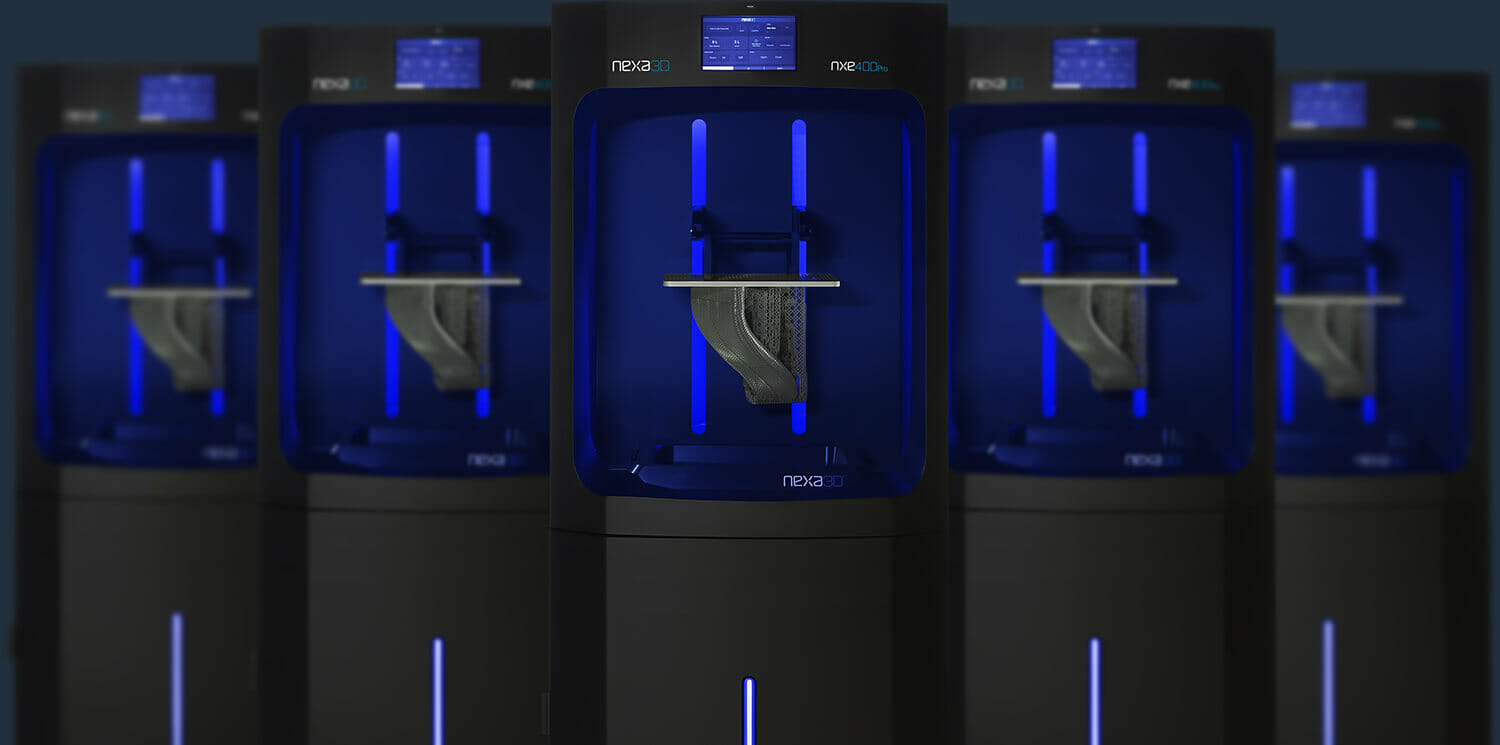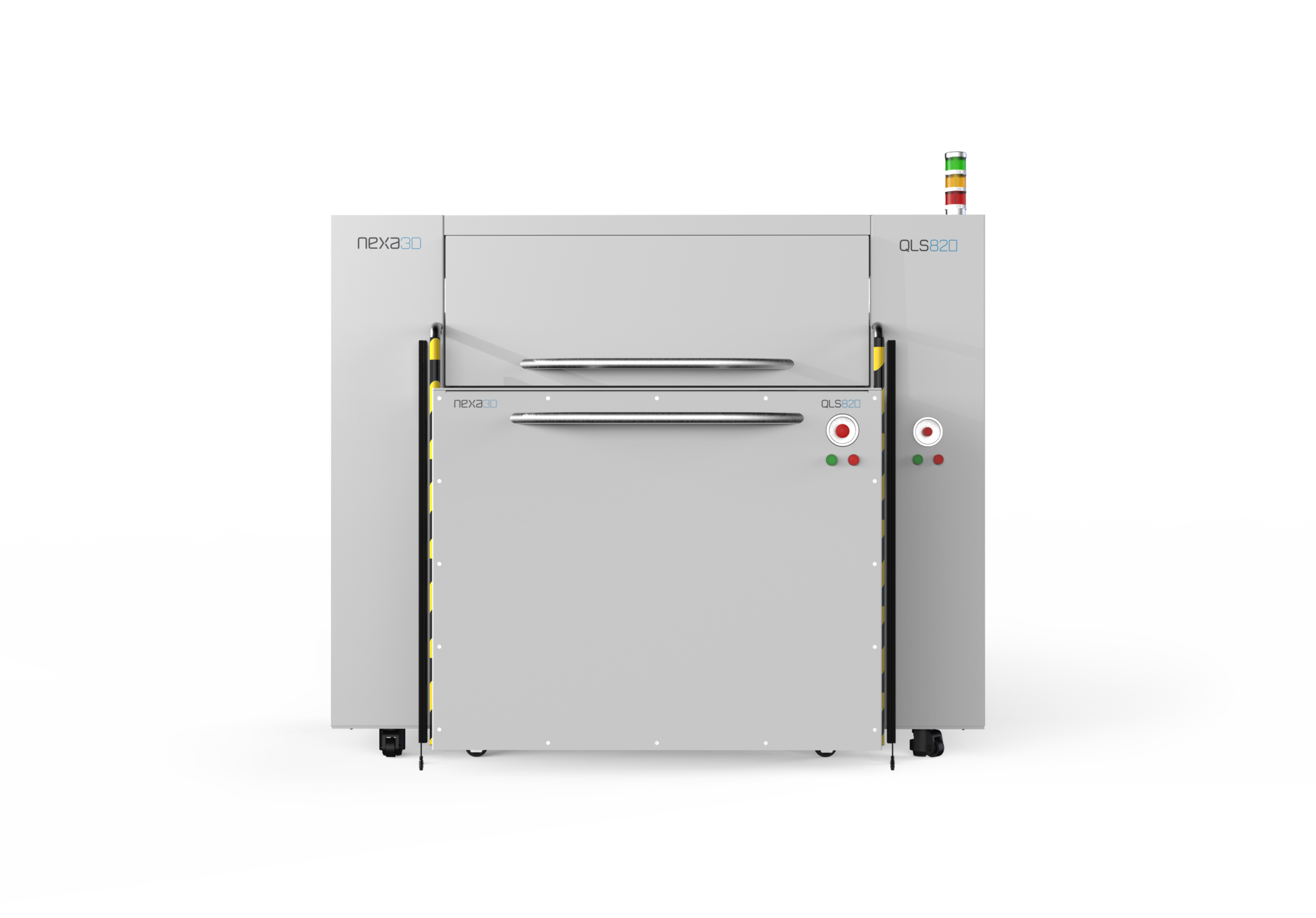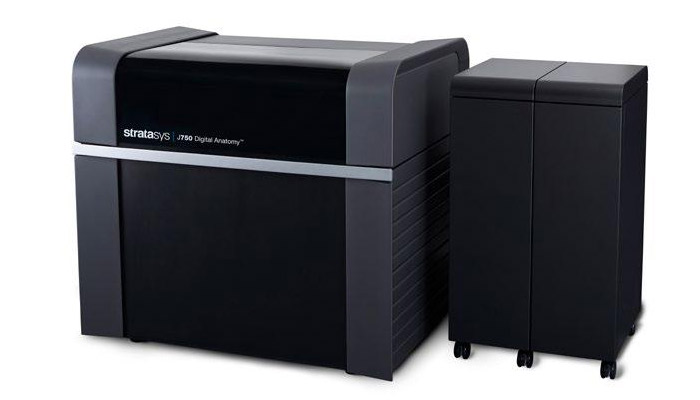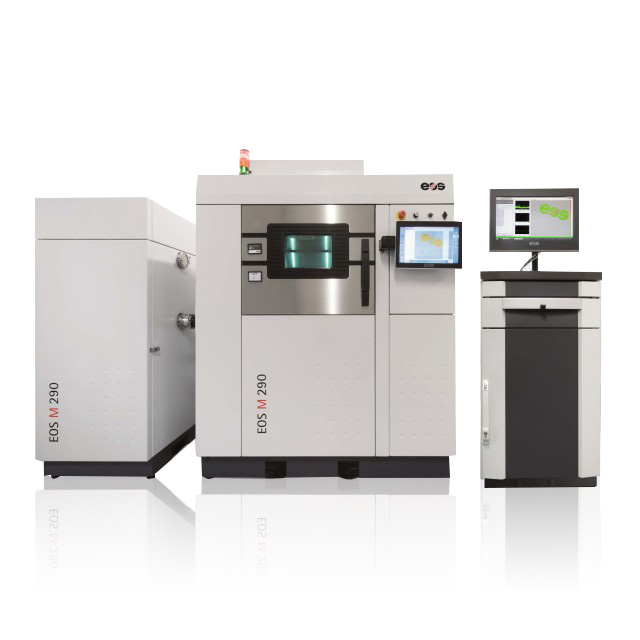- Everything you need to know about ABS 3D printing - March 9, 2023
- How a New Generation of 3D Printers is Accelerating the NPD Process - November 16, 2022
- Buyer’s Guide to an Industrial 3D Printer - October 31, 2022

Today’s 3D printers fill a number of different needs. Prototyping is the most obvious, but production is becoming more and more commonplace. If you are in need of local manufacturing capabilities with a high degree of automation, an industrial 3D printer might be the right choice for you.
But aren’t industrial 3D printers big, old, expensive, and slow? Actually, no. Today’s industrial 3D printers are highly capable machines in terms of throughput, build volume, repeatability, and precision.
We’ll go through the industrial 3D printer options and see if one of these powerful machines might be a good fit within your organization.
What is Industrial 3D Printing?
When we talk about industrial 3D printing, we mean 3D printers that are highly reliable and consistent, have high resolution, can print with engineering-grade materials, offer high-speed printing, have an ecosystem of materials and software supporting the 3D printer, have a large build volume, require little maintenance, and have foolproof safety features.
Because the benefits of an industrial 3D printer are unparalleled, they are quite a bit more expensive than desktop printers, with prices ranging from $50,000 to $500,000. But considering the benefits they offer; the prices are justified and in fact accord a faster ROI.
Industrial 3D Printing Processes
When most people think of industrial 3D printing, they think of powder-bed fusion and metal 3D printing technologies, but this is not always the case. In addition to the advanced technologies, industrial 3D printers also include Fused Deposition Modeling (FDM) and Vat Photopolymerization or Resin 3D printing.
We examine the most popular industrial 3D printing technologies and how they stack up against one another.
Fused Deposition Modeling (FDM)

Fused Deposition Modeling (FDM), also known as fused filament fabrication (FFF), is a 3D printing extrusion process that melts a thermoplastic filament and deposits it layer by layer on a print bed.
FDM is undoubtedly the most cost-effective entry point into 3D printing and is the preferred technology for most hobbyists. But it is not limited to affordable and sub-standard quality parts, instead, industrial FDM 3D printers are much more expensive and provide industrial-grade quality and reliability.
Some popular industrial FDM 3D printers include the Stratasys F900, Essentium HSE 280i HT, and Roboze Argo 500.
Pros
- Industrial FDM 3D printers can print with engineering-grade thermoplastics such as Acrylonitrile Butadiene Styrene (ABS), Polyethylene Terephthalate + Glycol (PETG), Thermoplastic Polyurethane (TPU), Polypropylene (PP), Polycarbonate (PC), Nylon, Carbon Fiber (CF), Polyetheretherketone (PEEK), and Polyaryletherketone (PAEK).
- Lower cost of technology acquisition.
- Simple to understand, run, and operate.
Cons
- Lowest resolution and accuracy among all industrial 3D printer technologies.
- Parts have a poor surface finish, which increases the time, cost, and effort required for post-processing.
- Print quality of parts can be affected by printing speeds.
- Printers have lots of moving parts – requiring expensive maintenance.
Vat Photopolymerization / Resin 3D Printers

Vat Photopolymerization is a 3D printing technology category that includes resin 3D printing processes such as Stereolithography (SLA), Digital Light Processing (DLP), and Masked Stereolithography (mSLA).
All of these technologies use liquid thermosetting resin, which cures or hardens when exposed to a laser or UV light source. The resin is cured for each layer by guiding the laser through a set of galvanometers or flashing the light through a projector chip or LCD mask. The process is repeated until the object is completely formed.
Though each of the three technologies has advantages and disadvantages, mSLA outperforms the others in terms of print quality, speed, throughput, and efficiency. It combines the best of both SLA and DLP while minimizing their drawbacks. You can read 10 things to consider when purchasing a resin 3D printer to know more.
Among the popular industrial resin 3D printers are from Envisiontec, Nexa3D, 3D Systems, and Carbon.
Pros
- Among all 3D printing technologies, Vat Photopolymerization or Resin 3D printers have the highest resolution and accuracy.
- Wide material library including modeling, engineering, and biocompatible materials that can be 3D printed safely.
mSLA technology combines the best of SLA and DLP technologies. - Higher speeds are possible.
- Tight tolerances are simple to achieve.
Cons
- Can be more expensive than FDM printers (though not always)
- Critical curing lasers, chips, and masks need to be replaced on occasion and can be expensive.
- Additional equipment is required for washing and curing the parts after printing.
- Liquid resin can be messy if not managed properly.
Selective Laser Sintering (SLS)

Selective Laser Sintering (SLS) 3D printers were among the first truly industrial 3D printers. They are widely used in a variety of industries and have a wide range of applications. They have proven to be ideal for low-volume production offering reliable part quality.
In this technology, polymer materials are used in powdered form. A powerful CO2 laser is used to sinter and fuse adjacent powder particles to form a bond. This laser continues to trace all the individual points of the part in a layer-by-layer process to build the entire object.
The unfused powder supports the parts thus eliminating the need for additional support structures. This unfused powder is collected and reused for subsequent 3D printing jobs.
Among the popular industrial SLS 3D printers are the Nexa3D QLS 820, 3D Systems ProX SLS 6100, and Prodways ProMaker P1000S.
Pros
- Polymer powder is tightly packed into the build chamber. This allows users to print parts using the entire build volume, as opposed to other technologies that only use the bed area.
- Support structures are not required with SLS 3D printing.
- Can produce a high volume of parts per print operation, making them ideal for low-volume production.
- Mainly uses Nylon-type materials which produce strong, durable production-grade parts.
Cons
- More expensive than FDM and Resin 3D printers.
- Small material library with Nylon being the most popular material.
- High maintenance cost because of expensive equipment.
- Necessitates a dedicated depowdering station, an HVAC environment, and other equipment, which raises the overall operational cost.
Material Jetting

Material Jetting (MJ) 3D printing works in the same way as a 2D printer. A printhead (similar to the printheads used in regular inkjet printing) dispenses droplets of a photosensitive polymer material that solidifies under ultraviolet (UV) light. This technology dispenses viscous liquids to create wax-like parts which have applications in investment casting.
Material jetting parts have high dimensional accuracy and a smooth surface finish. Multi-material printing is possible, and it is compatible with a wide range of materials, including ABS-like, rubber-like, and fully transparent materials.
This technology dispenses viscous liquids to create wax-like parts. These parts have applications in investment casting.
Some popular industrial Material Jetting 3D printers include the Stratasys J750, Solidscape S390, DragonFly LDM, and XJet Carmel 1400M.
Pros
- Material jetted parts are accurate and have a smooth surface finish.
- Provides solutions for multi-material and full-color 3D printing.
- Ideal for investment casting, visual or haptic prototypes, and explainer models.
Cons
- Limited material options because it can only work with low-viscosity materials.
- Finished products are brittle, photosensitive, and heat sensitive.
- Gradual deterioration renders them less suitable for use as functional prototypes.
Metal 3D Printing

Metal 3D printing refers to the entire range of metal 3D printing technologies including Metal FDM, SLM, DMLS, DED, and other technologies.
Among the popular industrial metal 3D printers are the EOS M 290, Renishaw RenAM 500Q, and SLM Solutions’ SLM 500.
Pros
- Parts have high strength and robustness.
- A wide range of metals can be 3D printed.
- Can produce end-use parts.
- Some metal technologies are suitable for serial production.
Cons
- Requires a significant capital investment.
- Return on investment can take a long time.
- All printed parts must go through industrial post-processing which requires very expensive equipment.
- Machine maintenance is costly.
- Parts are not as accurate and often require machining to finish.
Applications of Industrial 3D Printers
Rapid Prototyping
With industrial 3D printers, users can create realistic and functional prototypes that can be tested in real-world environments. As 3D printing eliminates the fixturing / tooling stage, prototypes can be created more quickly at lower costs for low volumes.
Furthermore, since prototypes are used to understand and fine-tune the end product, rapid iteration is essential, and industrial 3D printers are fast and reliable and thus provide a significant advantage over smaller, less expensive desktop printers.
Ultimately, the shorter the prototyping stage, the faster production and product introduction to the market. This enables a competitive advantage to any business and can only be made possible by industrial 3D printers.
Hybrid Manufacturing
Hybrid manufacturing refers to the use of 3D printing as well as traditional manufacturing technologies to create a part. 3D printing has not yet reached the point where it can completely replace traditional methods. However, it has the potential to supplement and improve production output by supporting traditional processes.
Traditional processes can be made more agile and flexible by using 3D printing. It has the potential to reduce costs and improve an organization’s economies of scale.
The speed and accuracy achieved by industrial 3D printers can provide a competitive advantage to businesses utilizing a hybrid manufacturing approach. The hybrid approach is commonly used in custom tooling, jigs and fixtures, manufacturing and inspection aids, and so on.
Production
Industrial 3D printers are ideal for producing end-use parts. They can be used in a variety of applications, such as those listed below:
One-off part manufacturing: Custom products made for aerospace applications in satellites, competitive motorsports, healthcare implants, and so on.
On-demand manufacturing: Parts are manufactured only when they are required, such as spare parts, obsolete or antique parts, and/or occasionally required parts.
Mass customization: Where parts are required in a certain volume but each part must be customized, as in patient-specific models, shoes, earbuds, and so on.
Short-run production: End-use parts that are required in small quantities, such as new product introduction, limited-edition parts, bridge manufacturing, and so on.
Get Started with Industrial 3D Printing

The latest generation of industrial 3D printers has made prototyping and end-use part production much faster and less expensive while also improving the quality of printed parts, allowing almost any company to use 3D printing to improve product development and production.
Nexa3D’s 3D printers, which use its patented Lubricant Sublayer Photo-curing (LSPc) technology, achieve the fastest printing speeds and highest throughput in their class. Nexa3D provides printers such as the NXE series and the QLS 820. Both of these 3D printers are known for their groundbreaking combination of speed and quality.
The NXE series is a range of ultrafast masked stereolithography 3D printers that are known for delivering accuracy and tolerances with a superior surface finish.
The QLS 820 raises the bar for SLS 3D printing by producing up to four times the throughput of traditional laser sintering 3D printers and other polymer powder bed technologies. At 20% job density, it can 3D print up to 8 liters per hour (both industry leading metrics). The QLS 820 is also available in a variety of materials, including PA12, PA11, polypropylene, aluminum, glass, and fiber-filled options.
Combined with automation-ready architecture and fleet management software, and Nexa3D’s industrial 3D printers are great options for most organizations.
Ready to get started with an industrial 3D printer? Talk to a 3D printing expert today to analyze your specific application, get a custom cost-benefit analysis, obtain custom 3D printed benchmark samples, and build the perfect industrial 3D printing solution.
